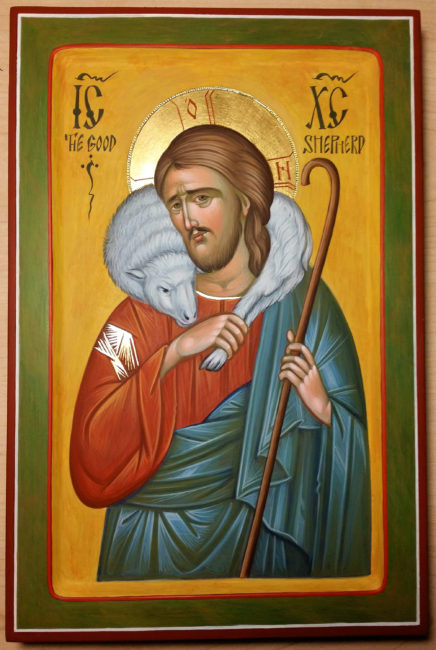Our first lesson for this coming Sunday is a little vignette from the Acts of the Apostles. An angel of the Lord appears to the apostle Philip in Jerusalem and tells him to go on the road down to Gaza, on the border with Egypt. On the road, he encounters the chariot of an Ethiopian eunuch, an official who’s traveled from the court of the queen of Ethiopia, down at the southern end of the Nile, all the way up through Egypt and to Jerusalem to try to understand who this God is who the Jewish people worship. He’s been at the Temple, and he’s on his way home, and he’s got a scroll of the prophet Isaiah. The Holy Spirit leads Philip to go and ask him, “Do you understand what you’re reading?” Not just “can you read Hebrew?” but, “Do you understand the prophecy you’re reading?” And he replies, “How can I understand unless someone guides me?”
So Philip sits there and rides in his chariot for a few minutes, and he explains the whole story of Jesus’ life, death, and resurrection, and what this new Christian movement is all about. And the eunuch says, “Look, here’s some water! Why don’t you baptize me now?” So he does.
And then—this is my favorite part—“When they came up out of the water, the Spirit of the Lord snatched Philip away; the eunuch saw him no more, and went on his way rejoicing.” (Acts 8:39) And that’s the whole encounter. That’s the whole story. That’s the whole relationship. They never see each other again.
You may or may not know that Ethiopia was one of the earliest countries to embrace Christianity. Before there were even any Anglo-Saxons in the land we now call England, Ethiopia was a Christian country. Around the same time that the Roman Empire was becoming officially Christian, Ethiopia, too, had Christian kings. You can’t give all the credit for this to the Ethiopian eunuch, but there’s a long tradition that says he was the first one to bring Christianity back to his home in Ethiopia.
This is a turning point in the whole Book of Acts. Jesus had told the apostles, “you will be my witnesses in Jerusalem, in all Judea and Samaria, and to the ends of the earth,” (Acts 1:8) and the story’s followed them in these concentric circles, as they spread the good news in Jerusalem, then in the surrounding areas, and now—finally—to the whole world.
What strikes me, for such a world-historical encounter, one so significant in the Book of Acts and in the whole history of the Church, is how brief it is. An angel appears to Philip. The Holy Spirit leads him to get into the chariot. And then the spirit of the Lord snatches him away as soon as the baptism’s over.
In my own life, there have been those moments where I suddenly—for no good reason at all—took a slightly different turn from what I was expecting. Where I encountered somebody, had a conversation, and soon moved along. It’s only ever in retrospect that I’ve seen what the Holy Spirit was doing right then, in those moments.
So I wonder, as you think back on your own life: What have those surprise encounters been? When have you suddenly changed direction? When have you asked for a guide to help you understand? These are the moments, as the Holy Spirit leads us down a wilderness road, when God is most present with us.
And I wonder where you might be headed next.
It may take a long time to see those chance encounters bear fruit—hopefully not centuries!—but this is the way the Holy Spirit works: in small moments, between us, at the least-expected time.

